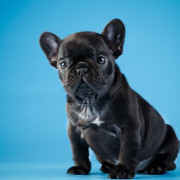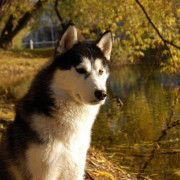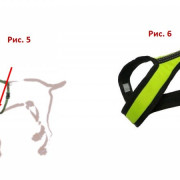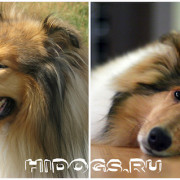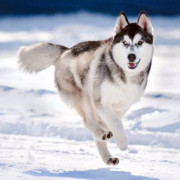Значение слова ГАВАНСКИЙ в Толковом словаре Ефремовой
Содержание:
Health

Havanese: generally healthy dogs
Havanese are generally healthy and sturdy with relatively few serious health issues. They typically live 14 to 16 years. Havanese organizations, such as the Havanese Club of America, monitor genetic issues to prevent propagation within the breed.
Havanese suffer primarily from , liver disease, heart disease, and . Havanese sometimes tear and may develop brown tear stains, especially noticeable on white or light coats.
The Havanese Club of America developed a system to encourage widespread participation of seven recommended tests for eye disease (CERF), congenital deafness (BAER), patella luxation, cardiac diseases, hip dysplasia, hip joint disorder (Legg-Calve-Perthes), and elbow dysplasia. The Canine Health Information Center (CHIC) program promotes testing and reporting of health test results for the Havanese breed. CHIC is a centralized canine health database jointly sponsored by the AKC Canine Health Foundation (CHF) and the Orthopedic Foundation for Animals (OFA). Testing required for a Havanese to receive a CHIC certificate includes OFA BAER, OFA Hips, OFA Patellas, and annual CERF exams. This provides an outstanding research tool for performing searches on individual dogs and also links health testing results of the dog’s related pedigree information (parent, offspring, and sibling), when those related dogs have been health tested.
Бишон Хаванез кубинская порода собак
Собаки породы Бишон Хаванез относятся к виду декоративных миниатюрных собак. Прародители были завезены на Кубу испанскими поселенцами, на месте собака была преобразована в отличительную от других собак породу. В свое время стремительно развивалась по всему испанскому и итальянскому побережью. Потомки этих собак продолжают существовать после кризиса только в США. Именно из США эти собаки распространились по всей Европе.
Особенности строения и характера собак породы Бишон Хаванез
Собака имеет крепкое телосложение, форма тела квадратная. Высота в холке может достигать 28 см. Вес колеблется от 3 до 5,5 кг. Голова собаки средней длины, череп плоский. Глаза крупные, миндалевидной формы. Взгляд добрый. Посадка ушей высокая, уши спадают вдоль скул. Уши покрыты шерстью с длинными очесами. Корпус хорошо развит, живот подобран. Бишон имеет сильные конечности. Хвост посажен высоко, закинут на спину и украшен подвесом из шерсти. Лапы прямы, небольшого размера. Шерсть бывает разная, может быть курчавая или волнистая. Стричь собаку запрещено. Исключение составляет шерсть на лапах и морде, которую допускается укорачивать до удобного уровня. Требуется ежедневное расчесывание шерсти. Окрас разнообразный, самые распространенные золотистый, кремовый или черный, но бывают и другие. Хаванский бишон очень умная и послушная собака, полностью предана семье, в которой живет. Обожает детей, не любит незнакомцев. В характере заметна некая дурашливость, особенно в момент игры с детьми
Ее воспитание потребует от вас терпения, иногда внимание собаки достаточно трудно удержать на каком-то определенном предмете. Для этого тренировка должна включать в себя огромное количество игр
Еще Бишоны обладают неплохими сторожевыми качествами. В случае опасности могут действовать бесстрашно и решительно.
Особенности содержания собак породы Бишон Хаванез
Собаки данной породы легко приспосабливаются к любым условиям окружающей среды. Бишон отлично будет себя чувствовать как в условиях квартиры, так и в большом загородном доме. Они плохо переносит одиночество, поэтому их нельзя надолго оставлять без внимания. Не нуждается в особенных физических нагрузках. Но ежедневный выгул необходим, для хорошего самочувствия. Достаточно здоровая собака, является долгожителем по сравнению с другими породами. Доживает до 15 лет.
Другие статьи:
Далматинец – порода собак аристократов Англии и Франции.
Порода собак Австралийский терьер.
Cредний шпиц (миттельшпиц) – порода собак из Германии
History

The Havanese is a member of the Bichon family of dogs. The progenitors of the breed are believed to have come from . Ship manifests from Tenerife bound for Cuba list dogs as passengers brought aboard, and these dogs were most probably the dog of Tenerife. Some believe the entire Bichon family of dogs can be traced back to the Tenerife dog, while others theorize that the origins are in Malta, citing the writings of Aristotle, and other historical evidence of the early presence of such dogs in Malta. Whatever the actual origins of Bichon dogs, these little dogs soon became devoted companions to the Spanish colonists in Cuba and were highly admired by the nobility.
As part of the , upper-class Cubans fled to the , but few were able to bring their dogs. When American breeders became interested in this and charming dog in the 1970s, the US gene pool was only 11 dogs. The American Kennel Club (AKC) only officially recognized the Havanese breed in 1996.
With dedicated breeding, and the acquisition of some new dogs internationally, the Havanese has made a huge comeback and is one of the fastest growing breeds of dogs in the AKC. The 2013 AKC Statistics rank the Havanese as the 25th most popular pure-breed in the United States, a rise in popularity from 28th place in 2012.
Havana Silk
A Havana Silk Dog is a type of from . The modern Havana Silk Dog is derived solely from recent Havanese dogs. Breeders have sought to re-create older depictions of the breed based on paintings, sculptures, and written descriptions. Compared to some Havanese, breeders seek to give the Havana Silk longer, straighter forelegs, a flatter, silkier coat, a longer muzzle, and smaller ears.
After 10 years of attempting to convince Havanese breeders to breed away from , many of the original leadership of the Havanese Club of America decided to leave the organization in order to create a breed that they feel more accurately represents the original dogs from Cuba.
They began referring to their dogs as Havana Silk Dogs, claiming them to be a different breed from the Havanese. However, the Havana Silk Dog is not recognized by the American Kennel Club (AKC) as separate from the Havanese, and many Havana Silk Dogs are also registered under the name «Havanese» with the AKC. The Havana Silk Dog Association of America is not currently seeking to register their breed with the AKC.
In an effort to preserve type and sound health, Havana Silk Dog breeders do not «cross-breed» their dogs with a Havanese who is not registered as a Havana Silk Dog.
Выбор питания
Порода гаванский бишон – декоративная. Их часто приводят на выставки, поэтому ее внешний вид очень важен. От правильного кормления очень много зависит. Сама собака предпочтет мясо и фрукты, но можно пойти тремя путями:
- Пользоваться хорошими сухими кормами.
- Комбинировать сухие корма с натуральными продуктами.
- Остановиться только на натуральном корме.
Поскольку собака маленькая, то натуральная еда дорого не обойдется. Это не означает, что кормить гаванца можно с человеческого стола. Это строго противопоказано. Желательно сразу приучить щенка не появляться на кухне, когда семья собирается за столом.
Питание должно включать мясо (белки и жиры), творог (кальций), овощи и фрукты (источник углеводов и клетчатки). Кормить следует два-три раза в день понемногу. Чистая вода должна быть постоянно.
Взрослая собака никогда не должна получать:
- Сладости как мучнистые, так и сахаристые.
- Колбасы, которые могут вызвать аллергию.
- Всю еду человека.
Щенков кормят по определенным правилам, поскольку они быстро растут. Им необходим белок, кальций (можно давать специальные витамины). До полугода щенков кормят 6 раз в лень, затем переводят на трехразовое питание.
Щенок и взрослая собака не должны быть раскормлены. Определить это очень просто. Следует погладить гаванца и почувствовать его ребра. Если они ощущаются под рукой, значит, все в порядке. Еще можно взвешивать взрослую собаку на соответствие стандарту, регулируя после этого количество пищи.
External links
Christina McDowell (Born March 14, 1985) is an American author, actress, and filmmaker, best known for her debut novel, After Perfect.
Kitty Flanagan (born 1968) is an Australian comedian, writer and actor who works in Australia and the United Kingdom. She has also performed in France, Germany, the Netherlands and Japan and at the Edinburgh Festival Fringe and Montreal Just For Laughs festival.
The Maltese (Italian: ) is a small breed of dog in the Toy Group. It descends from dogs originating in the Central Mediterranean Area. The breed name and origins are generally understood to derive from the Mediterranean island nation of Malta.
Portrait of Federico II Gonzaga (c. 1529) is a painting by Titian, who signed it Ticianus f.. Today in the Museo del Prado, Madrid, it portrays Federico II, Duke of Mantua who married in 1529; the portrait may have been commissioned for the occasion. The dog is an allegory of faithfulness.
The work is mentioned in a 1666 inventory of the Royal Alcázar of Madrid, coming from the collection of Marquess de Leganés. Previous owners included Charles I of England, who purchased many paintings from the Gonzaga collection.
| Traits | |
|---|---|
| Weight | 3–6 kg (7–14 lb) |
| Height | 23–23 cm (9–9 in) |
| Coat | Very soft double coat |
| Color | All colors |
| Life span | 14-16 years |
| Classification / standards | |
|---|---|
| Group , Section 1.1 Bichons #250 | |
| Toy | |
| Group 1 (Toys) | |
| Group 5—(Toys) | |
| Toy | |
| Toy | |
| Companion |
| Dogs originating in | ||
|---|---|---|
| Extant |
|
|
| Extinct |
|
| Bichons and Poodles |
|
|---|---|
| Belgian Griffons and similar breeds | |
| Tibetan breeds | |
| Japanese and Chinese breeds | |
| Toy spaniels | |
| Chihuahua and ratters | |
| Small bulldogs and molossers | |
| Yorkshire terrier and similar breeds | |
| Miscellaneous | |
As pets
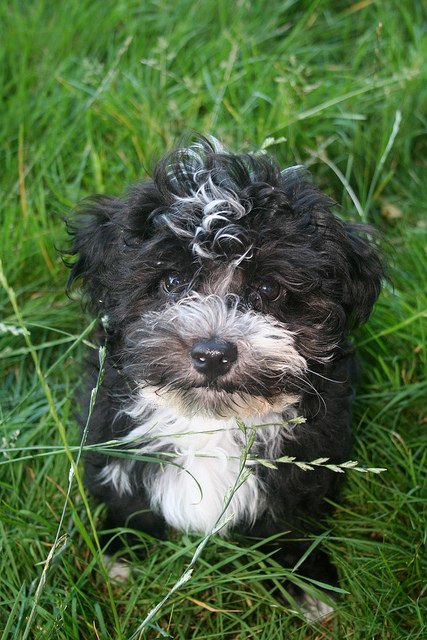
Black & white Irish Pied Havanese puppy

Havanese in European Winner show

Havanese puppy approximately 6 months old
Grooming
The profuse coat needs to be thoroughly combed at least twice per week. A Havanese with a dense or curly coat will be more prone to tangling and matting, thus requiring more frequent combing, than one with a silky, slightly wavy coat. If not showing the dog, it can be trimmed shorter to require less brushing. Many pet owners clip their dogs into a 1–2 inch long «puppy cut» for ease of maintenance. When owners give them a bath, they must make sure to dry them. Some in shorter clips can blot and air dry, but most will need to be blown dry. Owners can also comb their hair out after bathing so as not to dry in mats. Use high air but low heat to protect their sensitive skin.
Hair that grows on the bottom of their feet between the paw-pads needs trimming to allow traction on smooth floors. If they go out in the snow, ice clumps will stick between their paw pads; just rinse off in warm water or buy booties.
Some develop tear staining. A veterinarian might suggest treating red yeast issues to help diminish or eliminate staining; sometimes diet allergens are to blame and switching to a food without common allergens can be helpful. Excess tearing is sometimes a result of hair getting into the eyes; it is recommended that hair below eyes be allowed to grow out instead of shaved out. Havanese can wear a topknot or small braids to keep the hair out of their eyes during everyday activities.
As with any dog with dropped ears, the ears must be kept clean to help prevent ear infections. A cotton ball can be placed just inside each ear before bathing to prevent excess water from entering in. After bathing, since it may be moist, pluck a few hairs inside the dog’s ears to let air circulate through, preventing fungus from building.
Training
The Havanese is a toy dog. It is smart and can be easily trained. It is best to train this dog at a young age, because some habits will stick as they become older. However, training these dogs while they are older is still possible. Like many toy breeds, the Havanese can be difficult to housebreak. However, Havanese can be trained to use a litter box, which can greatly reduce issues with housebreaking. This breed is very smart and can be house trained faster than most toy dogs.
